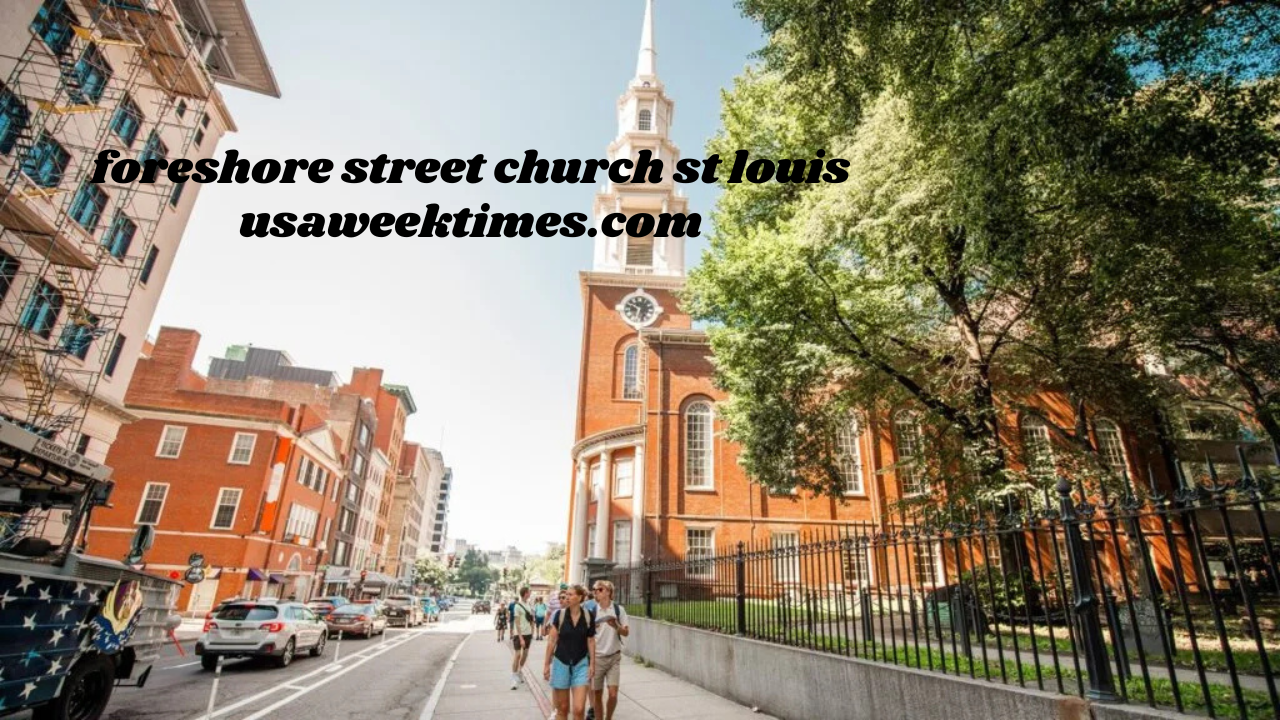Exploring the History and Significance of Foreshore Street Church St Louis
The Foreshore Street Church St Louis has remained an iconic landmark with a rich history and a deep connection to the local community. Known for its architectural beauty, spiritual significance, and historical importance, this church has attracted visitors, historians, and religious individuals alike. In this article, we will delve into the multifaceted aspects of the Foreshore Street Church in St. Louis, shedding light on its origins, evolution, and cultural relevance.
A Brief Overview of Foreshore Street Church in St. Louis
Located in the heart of St. Louis, Missouri, Foreshore Street Church stands as a prominent religious institution. Its roots can be traced back to the mid-19th century when it was first established to serve the growing needs of the community. Originally a modest chapel, it evolved over the decades to become a central part of the religious and cultural fabric of St. Louis. The church’s design reflects the blending of traditional and modern architectural elements, making it a unique structure in the city’s skyline.
The church has always been a symbol of faith, offering spiritual guidance and support to generations of individuals. Over time, Foreshore Street Church has also been involved in various community programs, outreach initiatives, and charitable activities, helping to foster a sense of unity among the city’s diverse populations.
Historical Origins: The Founding of Foreshore Street Church
The origins of Foreshore Street Church are deeply rooted in the religious and social changes that took place in St. Louis during the 1800s. As the city grew rapidly due to industrialization, many immigrants, particularly from Europe, began settling in the area. This led to a demand for new religious institutions to cater to the diverse communities.
In the early days of St. Louis, the church began as a small gathering place for local families who sought a sense of belonging and spiritual guidance. The church initially operated as a non-denominational chapel, though it later became affiliated with a particular Christian denomination. Its first structure was simple yet functional, reflecting the modest aspirations of its founding members.
As the city expanded, so did the congregation of Foreshore Street Church. The church’s leaders recognized the need for a larger and more robust building to accommodate the growing community. By the early 20th century, the church had undergone significant renovations, adding elements such as stained glass windows, a grand organ, and other features that would solidify its standing as a center of religious and cultural significance.
Architectural Design and Features of Foreshore Street Church
One of the most notable aspects of Foreshore Street Church is its stunning architectural design. The building combines elements of Gothic and Romanesque revival styles, with towering spires, intricate stonework, and majestic arches. These architectural features not only create an awe-inspiring visual impact but also serve a symbolic purpose, reflecting the grandeur and transcendence of the spiritual life.
The church’s stained glass windows are particularly striking. They depict scenes from the Bible and significant moments in the history of Christianity. Each window tells a story, and together they create a sense of continuity and reverence. The interior of the church is equally remarkable, with its high ceilings, wooden pews, and the grandeur of the altar. The combination of light streaming through the stained glass windows and the rich woodwork creates a serene and contemplative atmosphere.
Over the years, several renovations and restoration projects have been undertaken to maintain the church’s structural integrity and aesthetic beauty. These efforts have ensured that Foreshore Street Church remains a vibrant and accessible place for worshippers and visitors alike.
Foreshore Street Church as a Community Hub
Beyond its religious functions, Foreshore Street Church has also served as an important community hub in St. Louis. It has played a pivotal role in fostering a sense of belonging for residents, offering various social services, educational programs, and charitable activities. The church’s outreach initiatives have included support for the homeless, food banks, and after-school programs for children, among many other services.
In the mid-20th century, the church began to focus more on social justice issues, with its leaders actively engaging in movements that addressed racial equality, poverty, and civil rights. The church’s congregation became known for its commitment to making a positive impact on the broader community, extending its reach beyond the walls of the church to serve the greater St. Louis area.
Today, Foreshore Street Church continues to be involved in various social and community-focused initiatives. It is a place where people of all backgrounds come together to work toward shared goals, fostering a spirit of compassion, inclusivity, and justice.
The Role of Foreshore Street Church in Local History
Foreshore Street Church is not just a religious institution; it is also an integral part of St. Louis’ broader historical narrative. Over the years, the church has witnessed and participated in many significant events, from the industrial boom of the late 19th century to the social upheavals of the 20th century.
During the Civil Rights Movement, the church was a site for meetings, protests, and other activities aimed at combating racial discrimination. Its leaders and members worked alongside other local organizations to promote equality and justice. The church’s commitment to social change made it a cornerstone of the city’s fight for civil rights.
In addition to its role in social movements, Foreshore Street Church also played a part in the cultural life of St. Louis. Many concerts, art exhibitions, and public lectures have taken place within its walls, showcasing the church’s role as a cultural center. The church’s affiliation with various artists, musicians, and intellectuals has enriched the local community, making it a focal point for both spiritual and cultural activities.
Preserving the Legacy of Foreshore Street Church
As we look toward the future, it is important to recognize the efforts being made to preserve the legacy of Foreshore Street Church. Preservationists, historians, and members of the congregation have worked tirelessly to ensure that this historic institution remains a part of St. Louis for generations to come.
Restoration efforts continue to maintain the church’s architectural beauty and historical integrity, ensuring that its physical structure remains as awe-inspiring as it was when it was first built. At the same time, the church’s leaders remain committed to adapting its programs and services to meet the needs of the modern world, continuing to serve as a place of worship, community, and social outreach.
The church’s ongoing influence in St. Louis is a testament to its lasting impact on the city’s spiritual, cultural, and social landscape. As a place where faith, community, and history intersect, Foreshore Street Church will undoubtedly continue to be a beacon of hope and inspiration for many years to come.
Conclusion
The Foreshore Street Church in St. Louis is more than just a religious building; it is a symbol of faith, history, and community. From its humble beginnings to its prominent position today, the church has played an important role in shaping the city of St. Louis and its people. Its architectural beauty, commitment to social justice, and dedication to serving the community have made it a treasured institution in the city’s history. As it moves forward, the church will undoubtedly continue to be a source of strength and inspiration for future generations.




